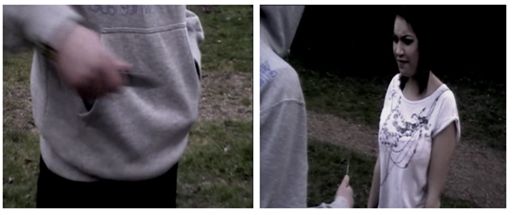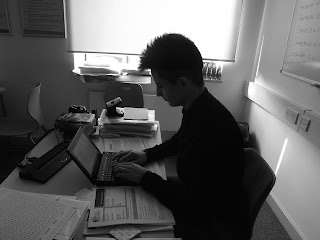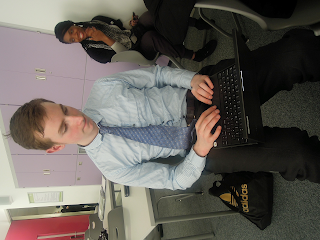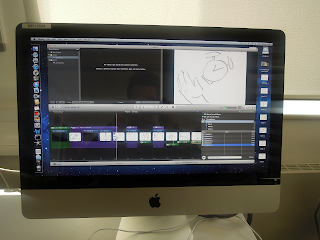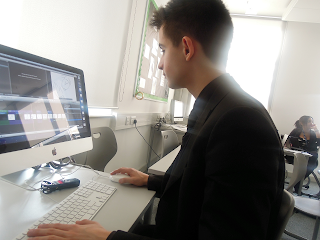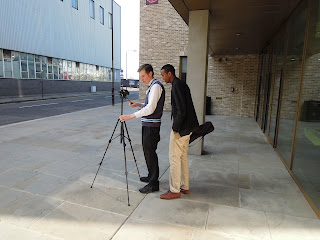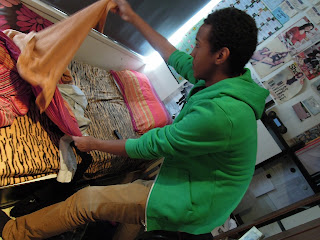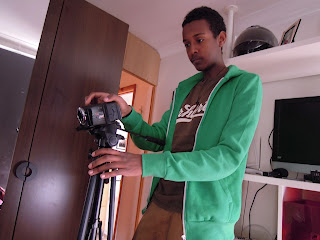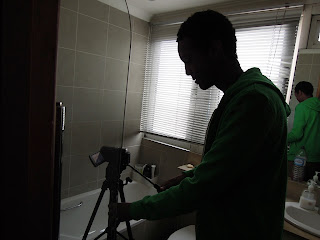Me and my group had conducted a questionnaire as part of the audience research in order for us to gain an insight for what our final piece could be. prior to this, we had discussed what type of thriller we want for our final piece and concluded that we would like it be a spy thriller. With this, I had constructed an interview with three people who had recently watched Tinker Tailor Soldier Spy. The questions are intended to support or choice for our final piece. We had chosen Tinker Tailor Soldier Spy as it was our main film for reference as it exercises many of the conventions we want to implement to our final piece.
Here are some pictures of my group meeting regarding the audience research.

Here are the outlines of 3 interviews I have conducted with people who have watched Tinker Tailor Soldier Spy. This articulates a spectrum of opinions on how good the film was regarding it's fulfillment as a thriller. This would serve as great support to our opening sequence as we could take into account the type of things we need to consider in order to satisfy our audience.
Did you think it was a good film?
1: Overall, yeah, I've enjoyed the movie. It kept me guessing throughout the entire film because there was never any real hint of who the real mole was in 'the Circus'. Plus, it was really suspenseful and that was the best feature of the film. But, it was too slow and could do with a bit of pace.
2: In retrospect, the film was just way too slow. I know it was trying to make a lot of suspense and everything but the fact of how slow it was just got in the way of the storytelling and ultimately bored me.
3: The film was good; not great, not bad either, but I did like the movie. I just feel that the pace of the film hindered the narrative. But, it was a price to pay for the mass amounts of suspense it had. The story was definitely good and I understood what was going on surprising, but my only problem was how slow paced it was and how dull everything seemed.
Did you think it was a good thriller?
1: With that amount of suspense and mystery, definitely. It's not quite up there with thrillers such as Body of Lies or the Bourne trilogy, but considering the style and the story of the actual film, it is a really good film. But, even though thrillers tend to have suspense and stuff, I still think they overdone suspense because they kinda slipped into the boring side.
2: Aren't thrillers supposed to keep you on the edge of your seat? If it had been faster with its pace, it would be good, but to be honest it was not a great thriller.
3: It wasn't a good thriller in my opinion. But they did keep all the stuff you'd see in other thriller films like the Bourne trilogy, with all the mystery it had in it and the pursuits that had taken place in the story. Thrillers, in my experience, are movies that involve action and vibrant storytelling with also suspense and mystery. I just think that Tinker Tailor Soldier Spy didn't quite live up to the action and vibrant storytelling part.
What do you think of the opening sequence?
1: Well, it was ridiculously long, but it did have some significance to the actual film which i gotta excuse for. Like when the he goes to the optician to get his glasses adjusted and when he went for a swim with his head above the water was all just a enforcement of his role as the observer. I get it, but honestly, it took too long to get into the plot.
2: Why did it take 30 mins to get anywhere in the film? Seriously I struggled to stay awake, it was stupidly boring and I really did hate it. There was no point for it.
3: I'm not entirely sure as to why the film took us through Smiley's boring routines and why it took that long for us to progress anywhere in the film. I guess all I needed was a little patience, but even-so, it didn't give any points to film with that opening sequence. It didn't have any suspense, or mystery and I'm not sure if it had anything to the do with the story as a whole. it wasn't a great start to the film. I think it was foreshadowing, or even warning, how slow the film actually was.




















